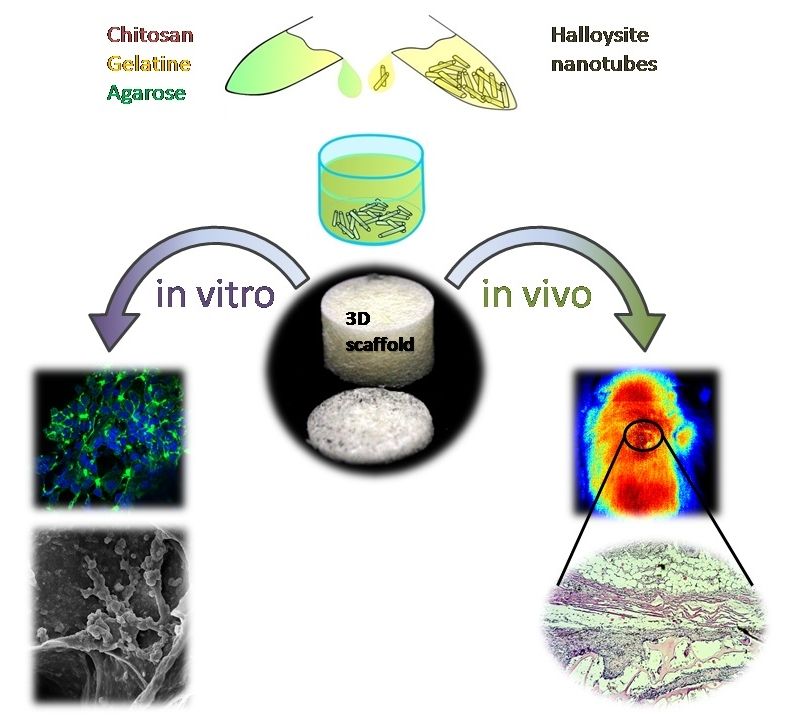The fabrication of a prototype tissue with functional properties close to natural tissues is crucial for effective transplantation. Tissue engineering scaffolds are typically used as supports that allow cells to form tissue-like structures essentially required for the correct functioning of the cells under the conditions close to the three-dimensional tissue.
Scientists of the Bionanotechnology Lab at Kazan Federal University combined biopolymers chitosan and agarose (polysaccharides) and gelatine protein to produce tissue engineering scaffolds and demonstrated the enhancement of mechanical strength, higher water uptake and thermal properties in chitosan-gelatine-agarose hydrogels doped with halloysite.
Chitosan, a natural biodegradable and chemically versatile biopolymer, has been effectively used in antibacterial, antifungal, anti-tumour and immunostimulating formulations. To overcome the disadvantages of pure chitosan scaffolds such as mechanical fragility and low biological resistance, chitosan scaffolds are typically doped with other supporting compounds that allow for mechanical strengthening, thus yielding composite biologically resistant scaffolds.










Comments are closed.